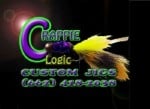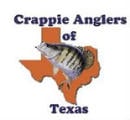It depends on the body of water, what part of the country, recent weather patterns, etc.,etc. The water i've been feeshn lately is in the high 40's but i have caught feesh from 2' deep to 24' deep within the last month. Go figure. The last 3 trips we spent 1/2 the day just trying to locate them, but that's half the fun. Learn to use, then trust your electronics is the best advise i can give.


 Likes:
Likes:  Thanks:
Thanks:  HaHa:
HaHa: 

 Reply With Quote
Reply With Quote

 water temps where I've been fishing have started of in the 30's and as the day goes on get up in the low 40's. All of our fish have been caught 3ft to 8ft deep in 6 to 14 FOW--only difference between Feesh and me is they have been in the same general area haven't had to search--but he has caught a few more
water temps where I've been fishing have started of in the 30's and as the day goes on get up in the low 40's. All of our fish have been caught 3ft to 8ft deep in 6 to 14 FOW--only difference between Feesh and me is they have been in the same general area haven't had to search--but he has caught a few more




















